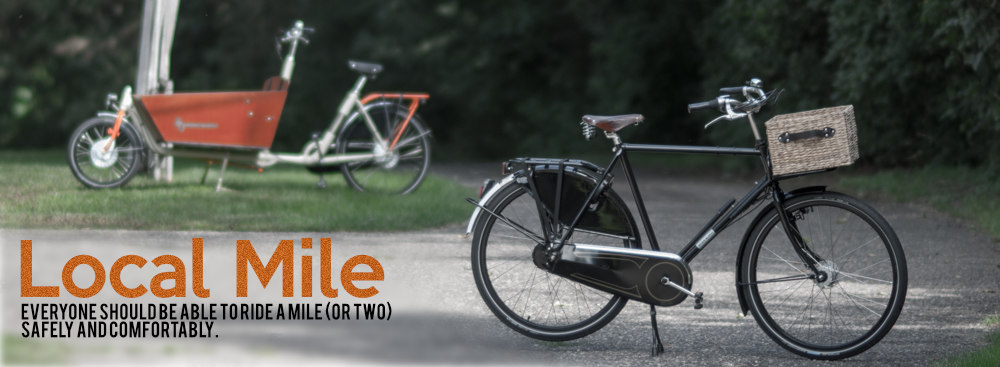At community gatherings, city council meetings (when allowed), on nextdoor.com and elsewhere the topic of people driving too fast in residential neighborhoods is raised very frequently.
And rightly so. The U.S. has the most dangerous road system of all developed countries. And the fastest residential streets. Most developed countries design residential streets for either 18 or 20 MPH. Here they are designed for 60 MPH – with little signs saying not to drive over 30. And most amazing, Minnesota traffic engineers set 30 as the minimum speed limit that can be set – even if cities wanted a lower speed limit they weren’t allowed to until recently.
Just on my local nextdoor feed there have been 37 threads started on this topic in the past 12 months. Clearly cities and their traffic engineers aren’t doing something right.
Speed bumps and lower speed limits don’t help though. More on this below.
Road Design Is Important
My daily world is primarily focused on health and safety, and why the U.S. is the least healthy and least safe of all developed countries. Now obviously someone being killed by someone driving is unhealthy so we don’t want people to be killed by people driving cars or trucks. So the problem of our being 3-17 times as likely to be killed as someone in Europe is an issue.
But there’s a bigger issue – movement. Our bodies are not maintenance free – we need moderate physical activity several times every day – movement – to keep our bodies healthy. Very consistently we see that the countries with the healthiest (and happiest) populations are those where people walk and bicycle a lot for transportation. Interestingly, there is almost a reverse correlation to gyms.
As well, and particularly to this topic of residential streets, walking is good. And being outside is good. And knowing our neighbors and interacting with them regularly is good. And lower stress is good. For more: Blue Zones
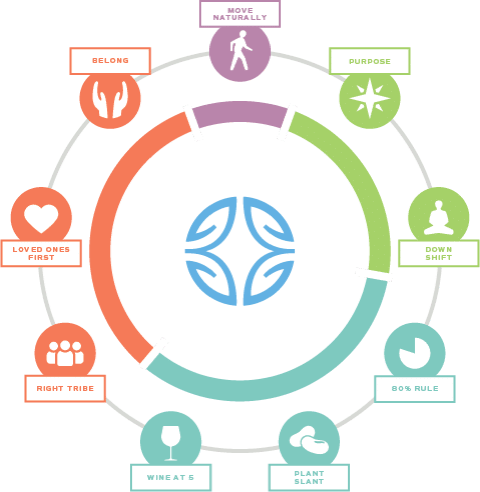
Children who walk or bicycle to school do better than those who arrive by car or bus. Making this a safe alternative for more kids would be good.
Noise is also a health problem in the U.S. It primarily affects us mentally, increases our stress level and both of these affect us physically. Car noise is one of the most harmful noise elements across the U.S.
Getting our residential streets under control, making them more human scale and human friendly like they use to be, is critical to our health, happiness and wellbeing.
To understand the problem of our residential streets and the fixes that will and will not work it may help to understand a bit about the types of roads we have and how we got to where we are.
Or you can skip directly to ‘Fixes’ below.
A Brief Bit Of History And Some Context
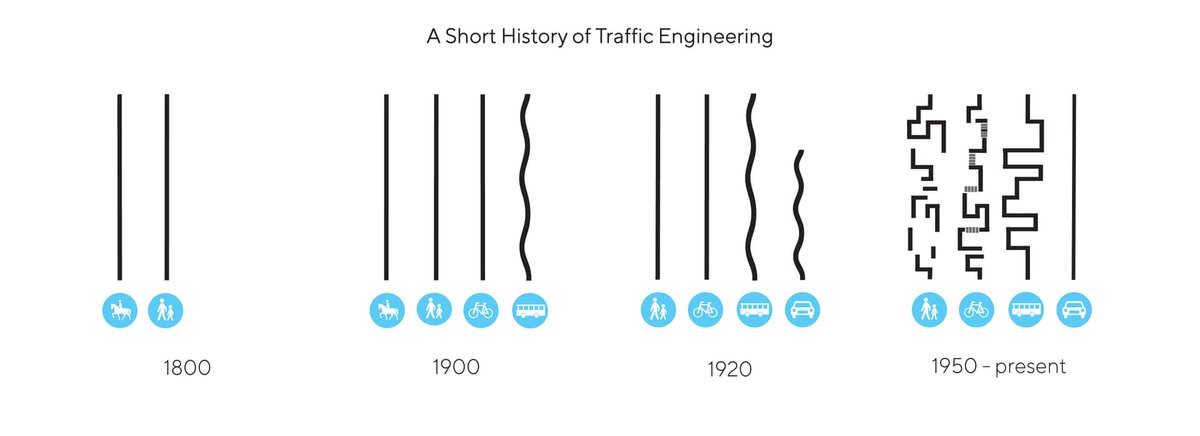
Traffic Engineering as a thing began in the 1900’s. Early on it was somewhat focused on all modes of transportation but by the 1940’s had become focused solely on motor vehicles (and threats to drivers such as train crossings). People walking, bicycling or in wheelchairs were left on their own with engineers considering these old fashioned and no longer needed because we modern people will just drive everywhere.
By the late 1960’s, seeing the ineffectiveness of traffic engineering for safety along with the numbers of people that drivers killed each year, many countries began efforts to make our world safer from what had become ‘the scourge of automobiles’. The red line in the chart below is the U.S., the green lines The Netherlands, Germany and Finland. (Note, since this chart was created the U.S. has seen a 32% increase in road deaths while the other countries in this chart have seen continued decreases or no change – we are not doing something right.)

Everyone focused on seatbelts and making cars safer with roll cages, crumple zones, anti-lock braking and other things that all helped.
And road design – traffic engineering.
Many countries focused on narrower roads that they found forced drivers to pay better attention to their driving and resulted in fewer and less severe crashes. They also placed increasing attention on safety and comfort for the most vulnerable – people walking, bicycling and those with disabilities. These proved critical in themselves but also resulted in increased safety for people in cars.
U.S. traffic engineers’ took a different approach – wider roads with curb reaction distances and fewer ‘dangerous obstacles’ like curves or anything that drivers could hit. Level Of Service or LOS, meaning ‘as little delay for drivers as possible’ also became a primary focus. “People will drive everywhere so we have no need of walkways (or bikeways)” became a thing in the 1950’s and is still a thing for many U.S. traffic engineers in 2022. Fortunately this is changing, but very very slowly.
Over time it became apparent that The Netherlands was the overwhelming winner for people walking and bicycling. Norway, Sweden, and the UK edged them out on safety for people in cars. And these four together with Germany, Denmark, Finland and Switzerland are the great eight who have dominated overall road safety for the past 50 years.
And yes, that’s the Germany with the Autobahn. Interestingly, it’s not speed that’s a problem but lane discipline – keep right except to pass, never pass on the left and other bits that make motorways outside of the U.S. safer regardless of speed.
Last place in every category, in last place every year since 1987, and with a gap to safer countries that’s still widening in 2022 – The U.S.

Something that’s happened somewhat more recently is a change in residential street philosophy in Minnesota. Historically streets are very different from roads. Roads have a primary and almost singular purpose of getting people from A to B as safely and quickly as possible – Mobility.
Streets have a mobility purpose as well but also have a living purpose. The mobility purpose is called Access because its purpose is not generic A to B mobility but access to locations along the street. And this is an important distinction.
Living is people getting mail from a mailbox, playing kickball, chatting with neighbors, working in their yard along the street, skateboarding and a long list of things that make a neighborhood a neighborhood. These are all very critical to our physical and mental health.
People living in a street also reduces crime. Criminals don’t like being watched. Often the more people out walking, bicycling or chatting the less crime a neighborhood will experience.
In the 1970’s this began to change in Minnesota and new streets began becoming more like roads – more motor vehicle mobility and less and less living. These are sometimes pejoratively called Stroads.
One traffic engineer summed this all up when he said in a meeting that he’s an engineer and works with things like cars, if you want something for people then you need a doctor. What really struck me about this is that when I was in uni for engineering the thing that was driven home to us over and over was life safety – whatever we designed needed to be as safe as possible.
A Better Mouse Trap
There is a lot of comparison here to Europe. This is because they have given us an example of what works and what can be done. They’ve built a better mousetrap.
Our antiquated and unsafe road designs are like everyone in Europe has been using Thomas Crapper’s new fangled toilet for decades but our engineers are still building outhouses for us.
And just like fewer deaths caused by disease thanks to the crapper, they have fewer deaths caused by drivers thanks to better road designs. While we still have higher deaths, year after year, from bad designs.
U.S. engineers are taking baby steps though. Newer designs are an improvement but still decades behind other countries. They are now adding a bit of water to the latrine hole in the outhouse. It still stinks. It’s still horribly unhealthy, but it’s not quite as bad as before.
Functional Classification Of Roads
Roadways are classified by function – what purpose are they supposed to serve.
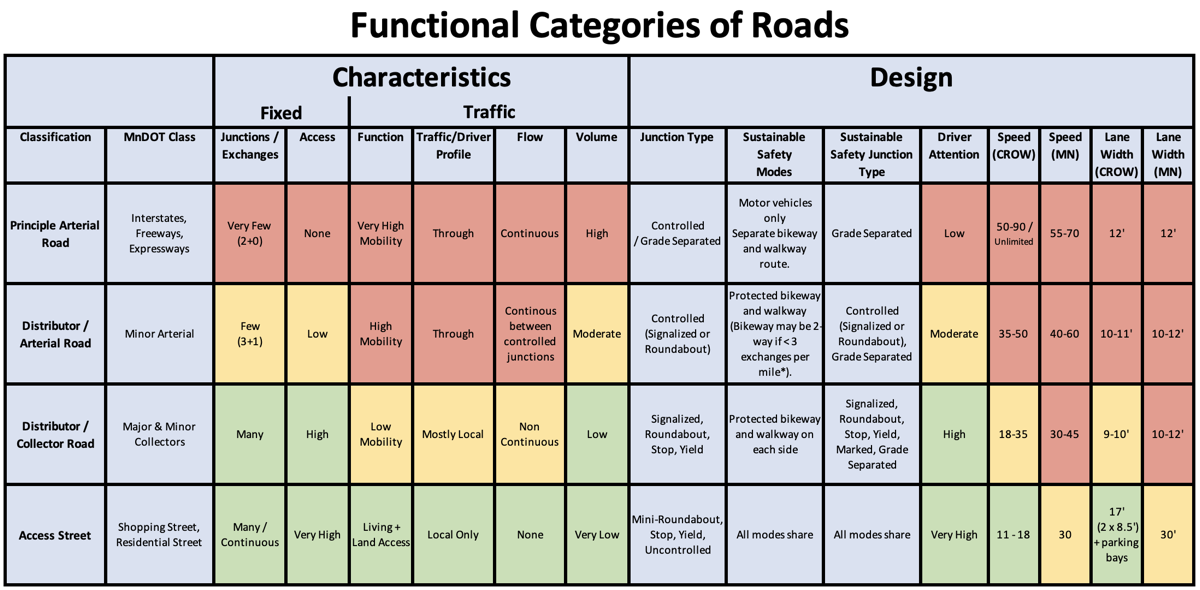
Streets or Access Streets have a very different function from the others (and thus why they are called streets rather than roads).
Through Roads, primarily Distributor/Arterial Roads and minimally Distributor/Collector Roads are primarily for mobility – getting from one place to another. A key element is that as throughput (traffic volume and speed) is increased, access/exchange (junctions, intersections, driveways and crossings) must decrease. The higher the motor vehicle throughput the greater need there is for safe exchange and crossings at every junction, intersection or other access point.
Streets on the other hand are multi-functional. Streets have a living function with people getting mail from mailboxes, taking an evening walk or bicycle ride, talking with neighbors, or playing basketball or hopscotch.
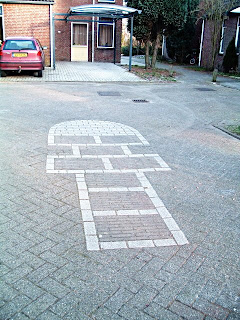
The city of Assen included hopscotch on this street.
A street is a gathering place, a road is for getting to a place.
On a street neither function should dominate the other. Someone in a car or truck must be respectful of those walking, bicycling or playing dodge-ball. People talking or playing kickball should move out of the way of a car or truck that needs to get through. Someone driving on a street should not expect to go 30 MPH or even 10 MPH, someone playing in the street should not expect to not be interrupted by someone needing to drive through.
These living functions are critical. They are important to personal health, happiness, wellness and to community.
People engaging in these living functions are much more vulnerable than someone in a car and their vulnerability, their risk, comes from cars. Because of this many countries now treat people driving motor vehicles as guests on streets. It is not their street or domain but everyone’s. They are allowed there only so long as they play nice with people living on the street.
The hierarchy itself is also important. Generally an Access Street should only connect to a Collector and never directly to a Arterial or Through Highway. The reason is that an Arterial is higher speed and volume and exchange can only safely take place at controlled (signalized or roundabout) junctions. A Residential Street connecting directly without a controlled junction creates difficulty and danger both for those trying to enter/exit the stream of traffic and those in the stream.
Fundamentals
There are three underlying fundamentals of human nature with regard to driving that are critical.
People drive to the DESIGN, not to the SIGN. If a street or road is designed like a highway then people will drive on it like a highway. Nobody should be surprised when someone drives 50 MPH down a straight 30’ wide residential street – It’s designed like a highway.
This is a known element in European traffic engineering with a population that’s much more law-abiding than our U.S. population. It’s a much more important concept here with a less law-abiding population.
Someone driving THROUGH is very different than someone driving TO. This relates to the difference in Mobility/Throughput and Access and two very different mindsets. In mobility/through mode we are focused on quickly making progress towards our goal of getting to where we want to go. In access mode we are almost there and can more easily change our focus from making speedy progress to interacting with those around us.
Along with this, driving in a car abstracts us from the real human world and this particularly when in mobility/through mode. In mobility/through mode – someone crossing in front of us is not a very real person, they are in that other world outside of our car, we don’t know them. They are an impediment to our making progress towards our goal. Someone accessing a place along a street likely knows the people around them and those people know them. These are real people. These are my neighbors.
Law Breakers Break Laws. Laws are only useful so long as the entire system of laws is respected – people loose respect for our laws because we make too many otherwise normal things illegal which undermines our entire system of laws and justice. The U.S. is widely regarded to have the least law-abiding population of all developed countries. We see how acclimated we are to law breaking every day on our roads.
The foundation of this is that we criminalize a class of things that are not criminal – personal vices. The three big ones with the greatest negative affect are underage drinking, consenting adult prostitution and pot. While if obeyed these might be very good laws, they are not obeyed and this leads to much greater problems downstream. We see this in road design as well with unnecessary overuse of stop signs (rather than yield) or designing a road for 60 and then posting a sign that says 30. We are almost all of us criminals and that’s not good. Someone who’s broken numerous laws before is not likely to obey a speed limit or stop sign.
More: A Wink And A Nod – Teaching Our Kids To Be Criminals
Fixing Our Streets
How can we make a 30’ wide residential stroad with speeding traffic in to the safer residential street that it should be?
A lower speed limit won’t help. Many people drive to the design of the road, not to what a sign says. If it’s designed for 70 MPH then don’t be surprised if people drive 70 MPH. This is an issue in law-abiding countries but is a much greater issue here because we’ve made too many normal things illegal which has caused a significant decline in regard for laws.
Speed bumps are only minimally effective and often non-effective. People will somewhat slow for the bump and then speed between them. A tabled crossing works well to enhance safety at the crossing but has little effect along the rest of the road.
There are some things that are proven to work. Often doing just #1 and #2 is relatively sufficient. It won’t make the streets as safe or inviting as those built to CROW standards but these are simple things that will significantly improve the safety and enjoyability of the neighborhood and can be done easily, quickly and for little cost.
1 – Eliminate Rat Runs. Access Streets or Residential Streets should NEVER be appealing for mobility/through travel between two higher order roads, often called a Rat Run. Drivers using it for this purpose will treat it similar to the higher order through roads and so they will drive faster, pay less attention and be more irritated/aggressive with anything or anyone who delays them.
The ONLY people who should be driving on a residential street are people who are beginning or ending their journey to access a local property (so sometimes it’s also necessary to eliminate traffic using one neighborhood road system to access another).
This also shortens the average distance that people are driving along a residential street which lessens the I-have-to-drive-fast-or-I’ll-be-late mindset as well as reducing the overall number of cars. This also increases the I-know-these-people-and-they-are-real-people element.
The easiest and often best way to do this is to simply block the streets to eliminate them as Rat Runs for people driving but still allow people walking or bicycling to go through. Decorative concrete planter boxes are a common method of doing this though the best is to remove the section of street leaving only a walkway/bikeway. (Sometimes if ALL of the other elements are incorporated including bump-outs and chicanes resulting in a 17’ wide street with parking bays, then blocking the streets may not be necessary.)
Examples:
In this first example in Shoreview. People on Demar and Hawes already get fast inconsiderate rat-run through traffic. Ramsey County are closing County Road F where it joins Hodgson so this will likely increase rat-run traffic on Hawes and Demar. Closing them off at the red dots will eliminate this through traffic and will limit motor traffic to local cars and trucks only.

The neighborhoods below have problems of people using them as rat-runs to avoid the junction of Hodgson and County J / Ash Street as well as people speeding down Emil Ave going to Bucher Park. Blocking off St Alban’s, Kent and Mackubin at the points indicated will eliminate the rat-run traffic. The south entrance to Bucher park should also be either eliminated or moved to north of the block on Mackubin to eliminate the speeding down Emil. An alternative would be to move the block on Mackubin to Emil and add a block at Elaine.
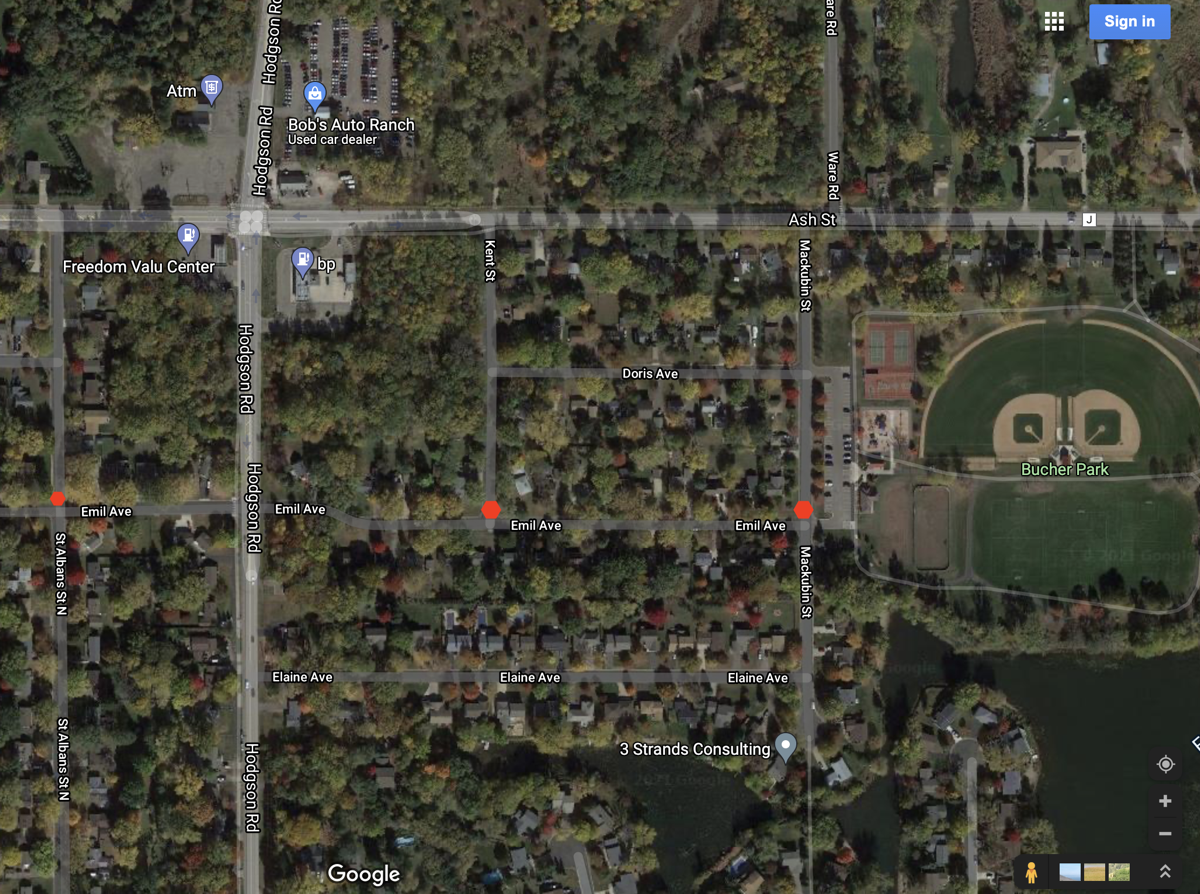
2 – Add Bumpouts at neighborhood entrances. These serve two purposes; they cause drivers to pay attention and slow down lest they damage their tires and they help to set the tone for drivers by distinguishing the road system from the street system – they are leaving the road system and are entering a neighborhood. These bumpouts should result in a street width of 17’ between the bumpouts.
3 – Add Bumpouts at neighborhood junctions. This can be particularly helpful in neighborhoods with many connecting streets.
4 – Add Chicanes. Chicanes are simply offsets in an otherwise straight street. In Europe it is common to see parking bays along one side of the street and then a chicane moves the parking bays to the opposite side of the street.
5 – Make It Distinctive. This kind of happens naturally with the bumpouts and chicanes but trees, road material/color, different and more human scale lights and other elements can make a big difference. The problem is that our residential streets don’t feel any different than higher speed roads so when someone turns off of a 45 MPH road (where they were likely driving 50-55) on to a residential street it doesn’t feel very different so they don’t drive very different.
6 – Rebuild to CROW Standards. If you do all of the above you’ve largely achieved a street that meets CROW standards. Sometimes it’s best though to just dive in and rebuild to full CROW standards. Better is to build it to CROW standards to begin with and this is what we should be doing with all new residential streets.
